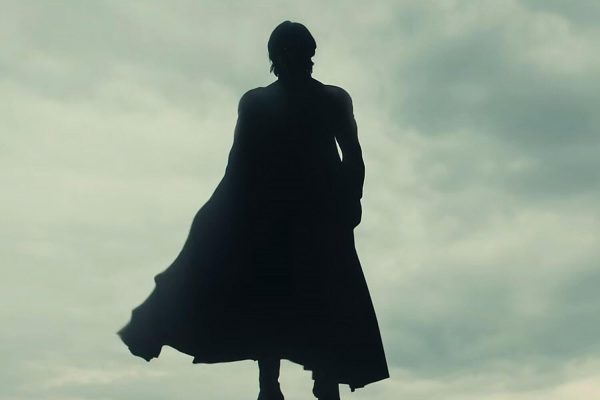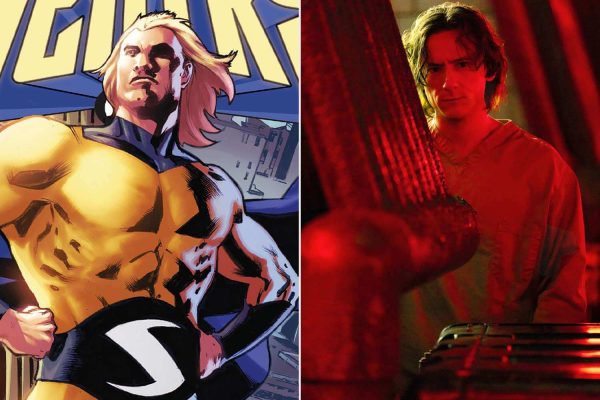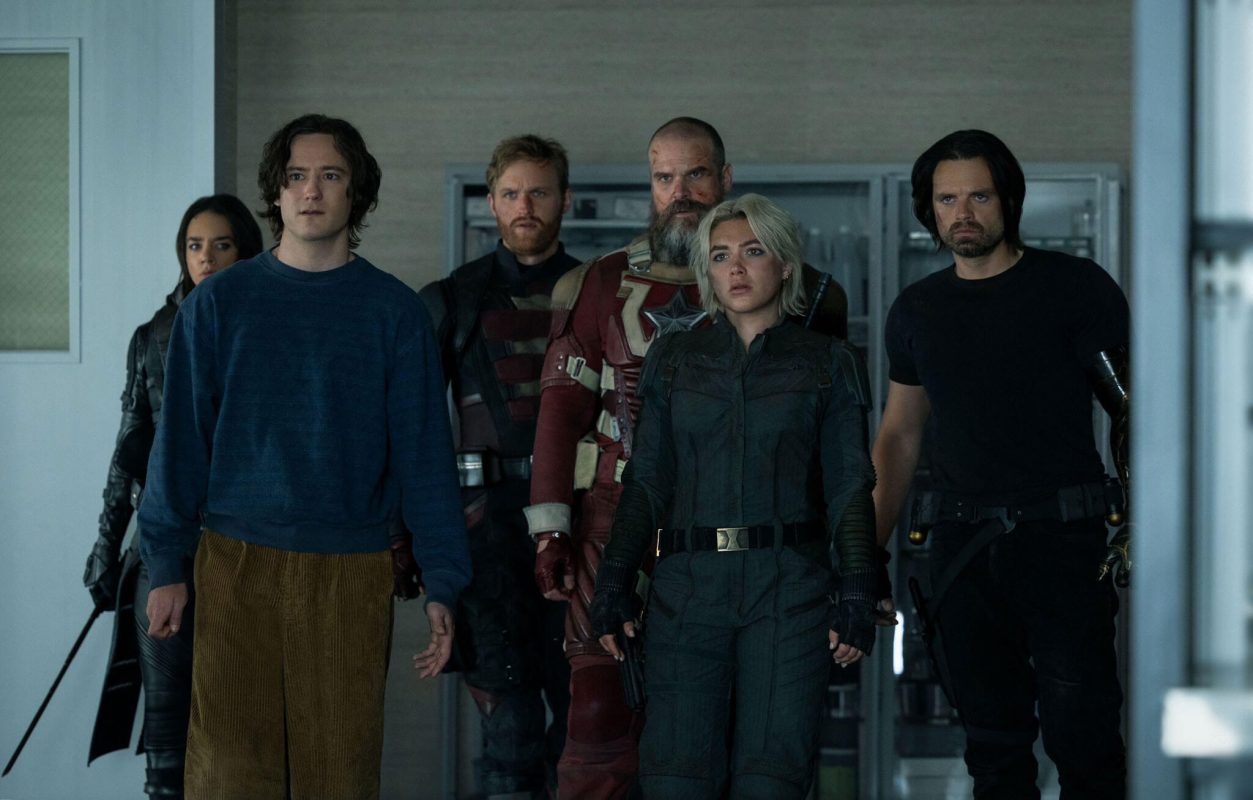world news
Thunderbolts’ Sentry Revealed: 5 Mind-Blowing Ways Lewis Pullman Is Changing the MCU Forever
Lewis Pullman’s First Day as Sentry: “I Didn’t Belong in That Suit”
Marvel Studios’ upcoming film Thunderbolts introduces one of the most complex and powerful characters in Marvel Comics history—Sentry, also known as Robert Reynolds. Played by Lewis Pullman, Sentry will make his first major live-action appearance in this ensemble superhero project set to shake up the Marvel Cinematic Universe (MCU). But Pullman’s entry into the superhero world didn’t come without its own emotional hurdles.
In a candid interview with Entertainment Weekly, Pullman described his first moment in the iconic yellow-and-blue Sentry suit as surreal and deeply personal. “I felt like I didn’t belong in it,” he admitted. That vulnerability mirrors the psychological depth of his character—an everyday man who becomes one of the most powerful beings in the universe but is tormented by mental illness and a dark alter ego known as the Void.
Unlike other Marvel characters who find themselves instantly at home in their superhero identities, Sentry is fractured, unpredictable, and dangerously unstable. Pullman’s own discomfort added a layer of authenticity to his portrayal, allowing him to tap into the inner conflict that defines the character.
Pullman’s casting may have initially surprised fans, but his grounded performance and introspective preparation make him a compelling fit. He approached the role not with bombast but with quiet intensity—exactly what a character as paradoxical as Sentry demands. And that psychological honesty sets the stage for what might become one of the MCU’s most emotionally nuanced portrayals.

The Thunderbolts’ Gamble: Introducing the Void Within
In Thunderbolts, the mysterious Bob is introduced as a patient of interest—a seemingly average man who soon reveals himself to be the reanimated Sentry. But Bob’s resurrection isn’t a moment of triumph; it’s the beginning of a psychological and moral nightmare.
The film, as teased by Marvel and confirmed by director Jake Schreier, dives deep into Bob’s internal struggle. As his memories slowly return, so does the looming presence of the Void, Sentry’s destructive counterpart born from the same mind. The Thunderbolts, a covert team of antiheroes and reformed villains, attempt to guide Bob back to sanity. But the emotional toll is immense. Several characters sacrifice themselves to try to reach the part of him that remembers compassion and connection.
Pullman’s Bob doesn’t just punch through buildings—he spirals through guilt, confusion, and grief. His battle isn’t just with enemies outside—it’s a war within his own fractured psyche. And by the end of the film, Bob loses nearly all his memories, emerging as a blank slate just as he’s needed most.
This twist isn’t just emotionally compelling—it’s a narrative masterstroke. It establishes Sentry not just as a powerhouse, but as a moral and emotional wildcard. His instability means every appearance carries both hope and danger. The character is a metaphor for PTSD, dissociative identity disorder, and the weight of unchecked power—and Pullman embodies that beautifully.
The Post-Credit Bombshell: Enter the New Avengers
While Thunderbolts offers a deeply introspective look at Sentry’s origins, it’s the post-credits scene that truly sets the stage for his future in the MCU. Shot as a sequence for the upcoming film Avengers: Doomsday, the stinger reveals a time jump: fourteen months into the future, Bob—now part of the New Avengers—is seen among a team grappling with legitimacy, trauma, and a new alien threat.
This scene introduces several new faces alongside Bob, including members of the Fantastic Four, establishing a fresh dynamic in the ever-expanding universe. The tone is uncertain, even somber. The New Avengers aren’t the flashy, polished team fans remember—they’re fragmented, raw, and struggling with identity.
Bob, however, is central. His power is respected, but feared. He is a “very good asset,” as Pullman later described him, but his inner volatility means he’s always being watched, always on edge. The team isn’t just using his strength—they’re constantly bracing for what happens if the Void returns.
Marvel has long used post-credits scenes to set up future films, but this one does more than tease. It redefines the direction of the franchise. With Iron Man gone, Captain America retired, and the old guard dispersed, the MCU’s new core will include Sentry—a character whose power rivals that of Thor and whose moral compass is shattered.

Doomsday Approaches: Pullman’s Sentry as the Wild Card Avenger
In Avengers: Doomsday, scheduled for May 2026, Pullman’s Sentry becomes a critical chess piece in the MCU’s next major saga. The film, expected to bring together new and returning heroes, pits them against the formidable Victor Von Doom, portrayed in a twist of casting brilliance by none other than Robert Downey Jr.
But while Doom threatens the world, Sentry threatens the team from within. Director Jake Schreier has hinted that Bob’s presence will force the Avengers to reevaluate their tactics, their alliances, and even their moral philosophy. When one of your teammates could turn into an unstoppable monster at any moment, trust becomes a battlefield.
Pullman has described the experience as “stepping into myth,” and he’s not wrong. Sentry’s character arcs in the comics have always involved massive moral dilemmas: should the team trust him, or preemptively take him down? Should his power be treated like a nuclear weapon or embraced as a gift?
In this phase of the MCU, it’s clear that emotional stakes are taking priority over flashy spectacle. And Sentry is the perfect embodiment of that shift—a character whose power is less fascinating than his pain. As Avengers: Doomsday unfolds, fans will see not just a superhero battle but a psychological reckoning.
Beyond Doomsday: Sentry’s Legacy in the Multiverse Saga
Though Marvel Studios has kept its long-term plans for Phase 7 and beyond tightly under wraps, industry insiders and fans are already speculating that Sentry’s role will extend into Avengers: Secret Wars and other multiverse-centered projects. And why not? He’s one of the few Marvel characters who can exist across multiple realities, each with their own version of the Void.
The potential is massive. Sentry could become the new pivot point of the MCU—a moral center constantly battling his own shadow. In some timelines, he could destroy worlds; in others, save them. And Pullman’s nuanced, sensitive performance offers the flexibility needed to carry such a burden.
Marvel has mastered the art of redemption arcs, from Tony Stark to Loki. But with Sentry, they may be setting up something even more profound—a continuous exploration of identity, accountability, and healing. His character invites hard questions: Can someone be a hero if they’re also a danger? What do we owe people who can’t control their worst instincts?
These questions resonate far beyond the pages of a comic book, and Marvel knows it. With Pullman at the helm, they’ve created a character who is not only pivotal for crossover events but essential for the emotional evolution of the entire franchise.
Evansville Thunderbolts 2025 SPHL Champions Leacy Hoodie – Blue
From lydiancustomtee

